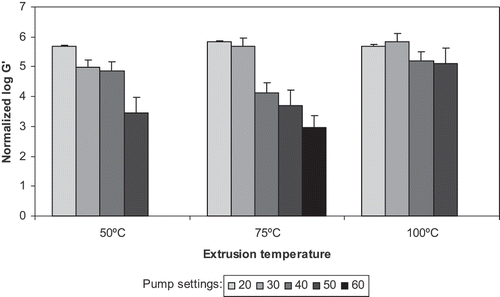Figures & data
Table 1 Composition (g/100 g sample) of nonfat dry milk (NDM), whey protein concentrate (WPC), and whey protein isolate (WPI), from manufacturers' specifications.
Table 2 Addition of water during extrusion process.
Table 3 Grams of moisture per 100 g sample in extruded nonfat dry milk (NDM), whey protein concentrate (WPC), and whey protein isolate (WPI) samples, with pooled standard deviations (PSD).
Table 4 Water solubility index values for extruded nonfat dry milk (NDM), whey protein concentrate (WPC), and whey protein isolate (WPI) samples, with pooled standard deviations (PSD).
Figure 1 Relationships between percent moisture and log of the elastic modulus (log G′) in nonfat dry milk samples extruded at 50°C (circles, solid line), 75°C (squares, dashed line), and 100°C (triangles, broken line). R2 values for the 50, 75, and 100 °C linear regression lines are 0.77, 0.88, and 0.41, respectively.
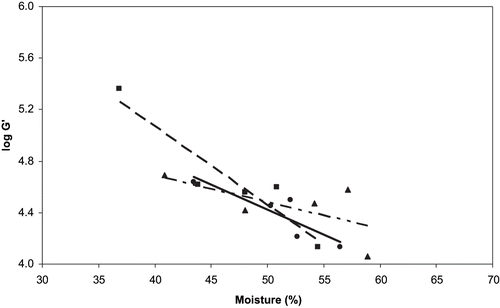
Figure 2 Relationships between log of the elastic modulus (log G′) and extrusion temperature of extruded nonfat dry milk samples, normalized to 50% moisture, with standard deviation bars.
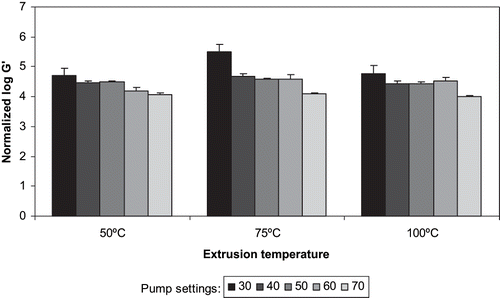
Figure 3 Relationships between percent moisture and log of the elastic modulus (log G′) in whey protein concentrate samples extruded at 50°C (circles, solid line), 75°C (squares, dashed line), and 100°C (triangles, broken line). R2 values for the 50, 75, and 100°C linear regression lines are 0.86, 0.81, and 0.20, respectively.
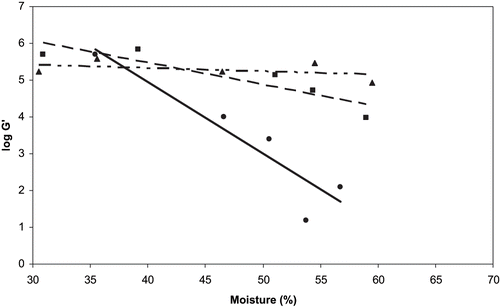
Figure 4 Relationships between log of the elastic modulus (log G′) and extrusion temperature of extruded whey protein concentrate samples, normalized to 50% moisture, with standard deviation bars.

Figure 5 Relationships between percent moisture and log of the elastic modulus (log G′) in whey protein isolate samples extruded at 50°C (circles, solid line), 75°C (squares, dashed line), and 100°C (triangles, broken line). R2 values for the 50, 75, and 100°C linear regression lines are 0.76, 0.92, and 0.70, respectively.
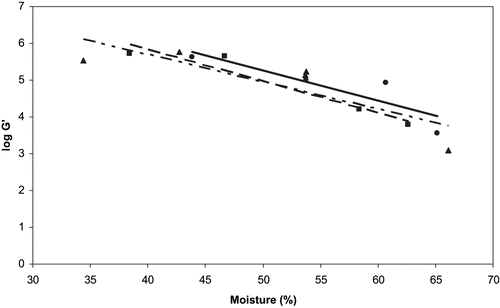
Figure 6 Relationships between log of the elastic modulus (log G′) and extrusion temperature of extruded whey protein isolate samples, normalized to 50% moisture, with standard deviation bars.
